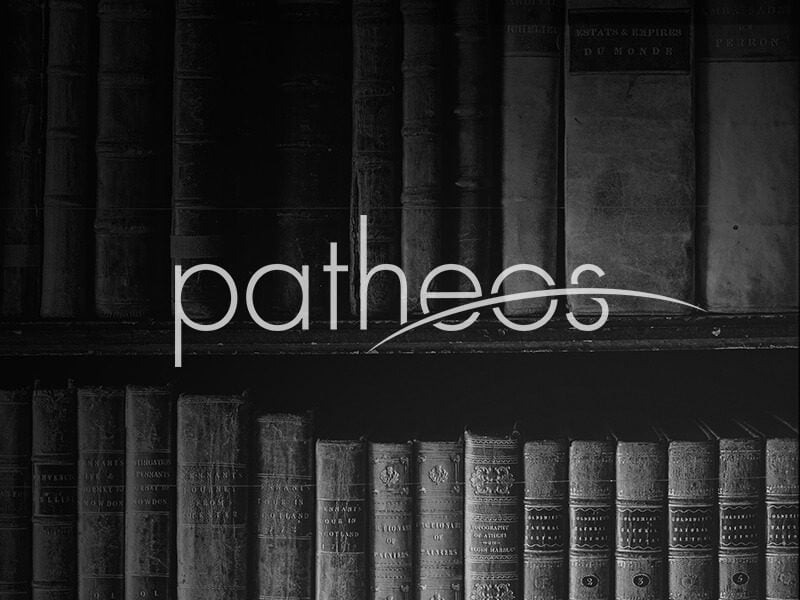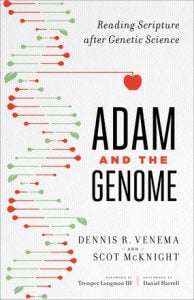 Back to the land/farm movement:
Back to the land/farm movement:
America’s heartland is graying. The average age of a farmer in the U.S. is 58.3 — and that number has been steadily ticking upward for more than 30 years.
Overall, fewer young people are choosing a life on the land. But in some places around the country, like Maine, that trend is reversing. Small agriculture may be getting big again — and there’s new crop of farmers to thank for it….
Gelvosa and Gerritsen are part of a generation for whom global warming has been hanging overhead like the sword of Damocles. In fact, all the young farmers interviewed for this story mentioned environmental health and climate change as factors in choosing a life on the land.
It’s a generation that has grown up in the digital age, but embraced some very old-school things: the farmers market, craft beer, artisan cheese. The point, they say, is to find a way to live high-quality, sustainable lives, and help others do the same.
“It’s very fulfilling work,” Gelvosa says, “and noble work.”
In Maine, farmers under the age of 35 have increased by 40 percent, says John Rebar, executive director of the University of Maine Cooperative Extension: “Nationally, that increase is 1.5 percent.”…
Twenty- and 30-somethings like Gelvosa and Gerritsen and the Ripleys represent the new face of the farmer, Rebar says. They’re college-educated and concerned about quality of life, and they’ve cashed in the usual benefits of a professional life — such as a medical plan, a retirement scheme and even a guaranteed paycheck — for something else:
“This is about creating something. This is about building something themselves. This is about using their two hands to make a difference,” Rebar says.
And, he says, this new generation of farmers have made farming cool again.
An extensive blog post about the feminization of the church by Kristen Rosser:
Why do more women than men go to church in modern Western Christianity? Perhaps most women don’t really care all that much for sterilized, feel-good niceness in the church either– but women are usually the ones responsible for getting their kids to church, so they deny themselves, pick up their crosses and get out the door. Maybe Christian leaders ought to be applauding their commitment rather than blaming them for what’s wrong with the service.
Maybe rather than capitulating to worldly gender-contamination and male fear of female cooties, publicly visible male Christian leaders should stop maligning femaleness and trying to market Jesus and the church as masculine. In fact, maybe they should stop trying to market the church at all.
Journey with Jesus and Eighth Day.
What does it mean to live in the Eighth Day? For the Church Fathers, it meant a life characterized by radical hope — hope beyond death, hope beyond time and space. For me — for now — it means something smaller, messier, and closer to home. As poet Christian Wiman explains in his memoir, My Bright Abyss: “To experience grace is one thing; to integrate it into your life is quite another. What I crave now is that integration, some speech that is true to the transcendent nature of grace yet adequate to the hard reality in which daily faith operates.”
In my daily reality, Eighth Day grace means foremost that conversion isn’t a one-time transaction; it’s a series of renewals enacted hour-by-hour, day-by-day, decade-by-decade. Which isn’t to say I don’t believe in Basil the Great’s eschatological “day without evening,” or St. Gregory’s luminous sun. I do. But I’m not kidding myself; I’ve got a fair number of sunsets to go before I achieve any blazes of glory. Living in the Eighth Day means resting — impatiently at times, I’ll confess — in the arms of a careful and meticulous God, a God whose creative work rarely follows the dictates of my calendar.
Sad story told well by Karen:
I went to another burial today. Seems like all my social outings lately are all death-related. Somebody needs to invite me to a party of a different sort. I need to remember what it feels like to laugh with abandon. I think I’ve forgotten.
I did not know the young man being buried but I know his grandparents. When I was the Oregon Bureau Reporter for the Tri-City Herald, I rented office space from the young man’s grandfather, an insurance agent here in town. It was a good office staffed with cheery and affable people. They always made my day better just by being in it. The young man’s grandfather is a particularly light-hearted fellow. He has the greatest laugh, a laugh that always reminded me a little of Dick Van Dyke.
He is a kind man. I like that in any person. Kindness. I wish kindness was as highly valued in our society as is athletic skills or porn. I can’t tell you why it isn’t. Maybe you have some ideas?
I used to think a person was either born kind or they weren’t. Now I believe it’s a skill that can be taught and learned. Some people might come by it naturally but anybody can learn to be more kind.
It was hard to watch my friends bury their grandson.
The Germans are revising the Luther Bibel again.
Patrick J. Egan, diversity and police forces:
In sum, among America’s big urban areas, liberal cities are no more likely to have diverse police forces than conservative cities. Why might this be the case? One possibility may be the varying degree across cities to which police unions are powerful. In conservative cities, public employee unions are typically weaker and thus less able to block efforts at diversifying the police, including residency requirements and expanded recruitment. Another hypothesis is that military bases tend to contribute to a place’s conservatism, but they also provide a ready supply of diverse individuals who are veterans — a top source of new police officers. The most likely explanation, however, is that until recently police diversity was not high on the agenda in many cities. Voters weren’t paying much attention to the issue, and thus city officials pursued diversity policies for reasons unrelated to their residents’ liberalism or conservatism. That may change over the next few years if the spotlight of controversy continues to shine on the lack of diversity in most big-city police departments.
Diversification of police forces is no magic solution to our current controversies surrounding violent encounters between cops and citizens. For example, as FiveThirtyEight’s Ungar-Sargon reports, evidence is mixed that non-white police officers are involved in violent encounters any less than white officers. But common sense suggests that police forces will be more effective and more respected to the extent that their racial makeup is similar to that of the city residents they serve. For now, this circumstance is just as likely to be true in our most conservative big cities as in our most liberal ones.
More doing of good in this world, by Vivek Wadhwa:
Power outages are a huge problem in most of the developing world. Classrooms often have low-cost learning devices, but children can’t use them because there is no power during the day. Solar power can provide some help, but you still need a reliable storage mechanism to power tablets, laptops, and other low-cost electronics that, paired with web-based curricula, give students access to a first-world education.
Siva Rajendran, with a background in building powertrains and power-management systems for electric vehicles, designed a rechargeable portable battery the size of a small water bottle that can run a classroom with 20 tablets and a projector for 20 hours. It takes otherwise wasted “used” lithium-ion batteries from electric cars, which degrade to 70 percent of their original capacity after about five years. They may lack the ability to power an electric car but are powerful enough to charge learning devices in schools. His company, Totus Power, builds a battery pack with the same output as a conventional battery backup system but weighs only one fifth as much and can be a tenth the cost. Most importantly, unlike most car batteries in common use for this purpose in the developing world, it has no toxic components.
Countries with the fastest internet speeds.
Matthew Rose at the Berkeley Institute, takes on Charles Taylor in this piece:
By assimilating a secular way of believing with the essential content of Christian faith, A Secular Age sanctifies and makes absolute precisely what we should regard as contingent—the age in which we live. This is not to say that much of what Taylor writes about the ways secularity has altered our culture and our sense of self is wrong and should not shape academic debates. His descriptions of the secular age are compelling and deserve the wide discussion they have inspired.
But if it is true that we have reached the end of an era and now live in a secular age, it will be even more important for Christians to know what has been lost and why. This Taylor will not and perhaps cannot teach us. Instead, he makes secularism invincible to the radical criticism it most needs. Like all Hegelians, Taylor is an apologist for the present, a theologian of the secular status quo.
Alasdair MacIntyre also diagnosed our culture as fatigued by the mutual antagonisms of rival traditions. MacIntyre, however, maintained a chastened confidence in the power of human reason to guide us toward the perfected understanding that is the end of all inquiry. Our confusions and disagreements, he wrote in his Gifford Lectures, “can be a prologue not only to rational debate, but to that kind of debate from which one party can emerge as undoubtedly rationally superior.”
MacIntyre combated the prejudice, uncritically affirmed by Taylor, that secular modernity is a historical dispensation from which there is no intellectual escape. He called his work a “radical renovation” of classical traditions of thought. Its most important consequence has been a growing confidence that the work of human reason can be undertaken in a context broader than that of modernity.
We would do well to listen to Taylor, but apprentice ourselves to MacIntyre. For Christians in a post-Christian culture will need to think in terms of the most expansive of all temporal horizons—a time, bounded by the beginning and the end of God’s holy purposes, that Augustine, writing at the end of another epoch, called the saeculum.
Third world? Developing countries? Or what?
But that naming struggle was nothing compared to figuring out what to call the parts of the world we cover. Third world? Developing world? Global south? Low and middle income countries?
Every label has its problems — and, as it turns out, an interesting back story. Here’s what I learned from talking to many, many experts.
More than half a century ago, the Cold War was just starting. It was Western capitalism versus Soviet socialism. But there was another group of countries. Many of them were former colonies. None of them were squarely in either the Western or Soviet camp. Thinking of these three factions, French demographer Alfred Sauvywrote of “Three worlds, one planet” in an article published in L’Observateur in 1952.
Caitlin Dewey, by any other name a selfie-class:
The online satirists at The Daily Currant earned lots of laughs in September when they claimed that Boston’s Emerson College would soon be launching a course on “The Art of the Self Portrait.”
But four months later, a London college is offering a class by almost the exact same name — and this time, it’s no joke.
“The course is a theory/practice introduction to photographic self-portraiture,” intones a syllabus for City Lit’s “Art of Self-Portraiture.” “It is conceived for students to improve their critical understanding of the photographic self-portrait, as well as a platform to develop ideas towards the creation of a coherent body of work.”
Stephanie Lacsa told San Diego County authorities she noticed the water level in the toilet was higher than usual when she went to the second-floor restroom Tuesday. When she plunged it, a snake popped up and flicked its tongue.
She ran out, taped the door shut and called Animal Services.
The department says an animal control officer found a giant Colombian rainbow boa on the floor.











